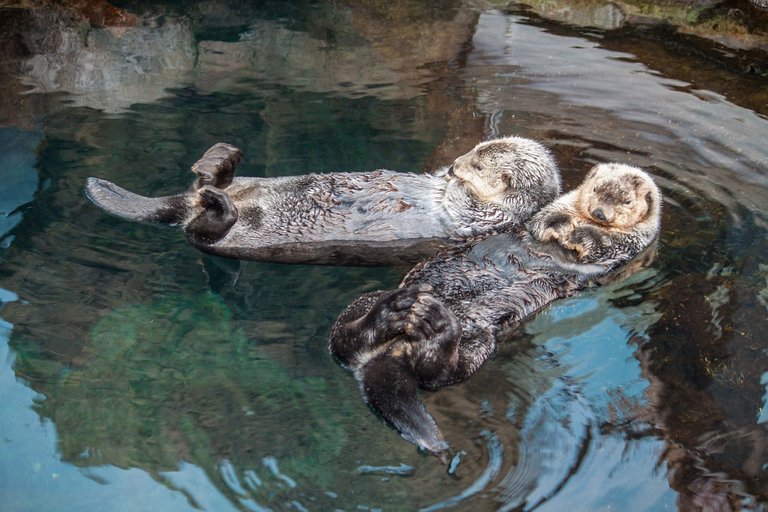Haiku 14 (Otter)

Source
A playful creature
The otter’s mischievous life
Carefree family
This Haiku was inspired by:
I have two reasons for this haiku! One is my amazing friend @sugarfix, who loves these little critters! They make him smile and in all honesty, the second reason is that they make me smile as well. I have no deep knowledge about otters. Nope, all I know is that I find them cute as fuck and I would like to have one as a pet! I am just kidding! An animal like this belongs in the wild where it can live free like they are meant to be! BUT, just look at their faces! You melt right? I do!
I want to learn more about Haiku's and because of that I do the Haiku Zoo show together with Breeze and the haiku's that I share here are written with the help of the wonderful @thebugiq. He is always an amazing friend when it comes to helping me write and to poke my mushy brain! Thank you BUG!
What is Haiku?
Haiku is a form of poetry, first made popular in Japan, which has become appreciated around the world. Haiku poets are challenged to convey a vivid message in only 17 syllables.
One of the greatest Haiku poets was the Samurai, Basho (1644-94). Basho's father was also a Samurai from the Iga province. To become a Samurai, Basho served a local lord who was fond of writing.
Basho learned the style of writing Haiku, and wrote under the name, Sobo. During the years, Basho traveled throughout Japan writing and further developing the Haiku style. He died in Osaka, Japan in 1694, and continued to write haiku up until his death. A sample of Basho's haiku style:
Spring morning marvel
lovely nameless little hill
on a sea of mist
In Japan these poems are valued for their simplicity, openness, depth and lightness. Structural Rules
• Use exactly 17 syllables
• Syllables are arranged in three lines of 5-7-5
• Avoid similes and metaphors
• Refers to a season of the year
What is a Haiku about?
Haiku poems can describe anything, but are seldom complicated or hard to
understand. Almost all Haiku has a dominant impression, or main idea, that appeals strongly to one of the five senses.
The Seasonal Theme
Each Haiku must contain a kigo, a season word, which indicates what season of the year the Haiku is set. For example, blossoms would indicate spring, snow would give the idea of winter, mosquitos would imply summertime. The seasonal words isn't always that obvious, you might needs to consider the theme of the poem to find it.
For example:
Clouds appear and bring
to men a chance to rest from
looking at the moon
Text source haiku
©Original Haiku Poeticsnake

Hi! I am a robot. I just upvoted you! I found similar content that readers might be interested in:
http://teacher.scholastic.com/lessonplans/pdf/dec05_unit/whatishaiku.pdf
This is the most accurate description of a carefree family :)
It is always interesting reading your haiku series I must say
sleeping on your back while swimming. I candeal with that.
Otters are cool btw